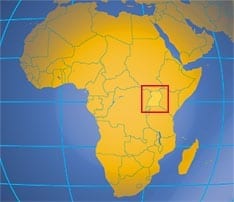Uganda’s road network consists of approximately 10 000 km of national or trunk roads (of which some 2 200 km are bituminised, and the rest gravel), 25 000 km of district or feeder roads, 2 800 km of urban roads (comprising roads in Kampala City, the 13 municipal councils and the 50 town councils in the country), and 30 000 km of community roads.
There are also private roads, some of which are open to the general travelling public. Road transport remains the dominant mode of transport in terms of the scale of infrastructure and the volume of freight and passenger movement. The national road network carries 80% of Uganda’s passenger and freight traffic; it includes international routes linking Uganda to neighbouring countries and the sea (via Kenya and Tanzania), and internal roads linking highly populated areas and large administrative and commercial centres. It provides the only form of access to most rural communities. The government is implementing a programme of continuous upgrading of key gravel roads to bitumen standard.A rail wagon ferry service connecting Jinja with the Tanzanian Port of Tanga, via Mwanza, was inaugurated in 1983, thus reducing Uganda’s dependence on the Kenyan Port of Mombasa. In 1986, the Uganda Railways Corporation and the Kenya Railways Corporation began the joint operation of Lake Victoria Marine Services, to ferry goods between the two countries via Lake Victoria.
The International Airport is at Entebbe, on Lake Victoria, some 40 km from Kampala. There are also several small airfields.







